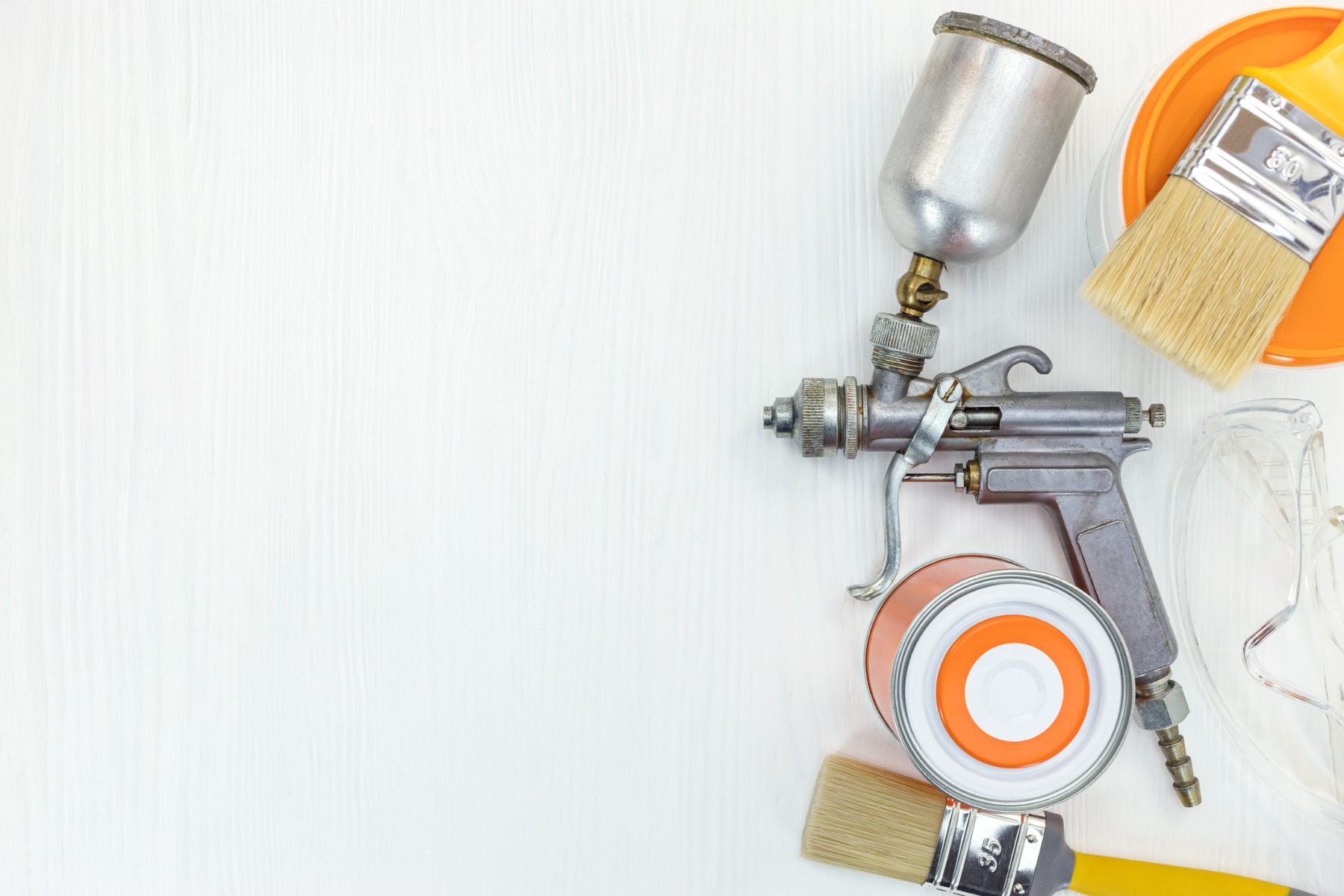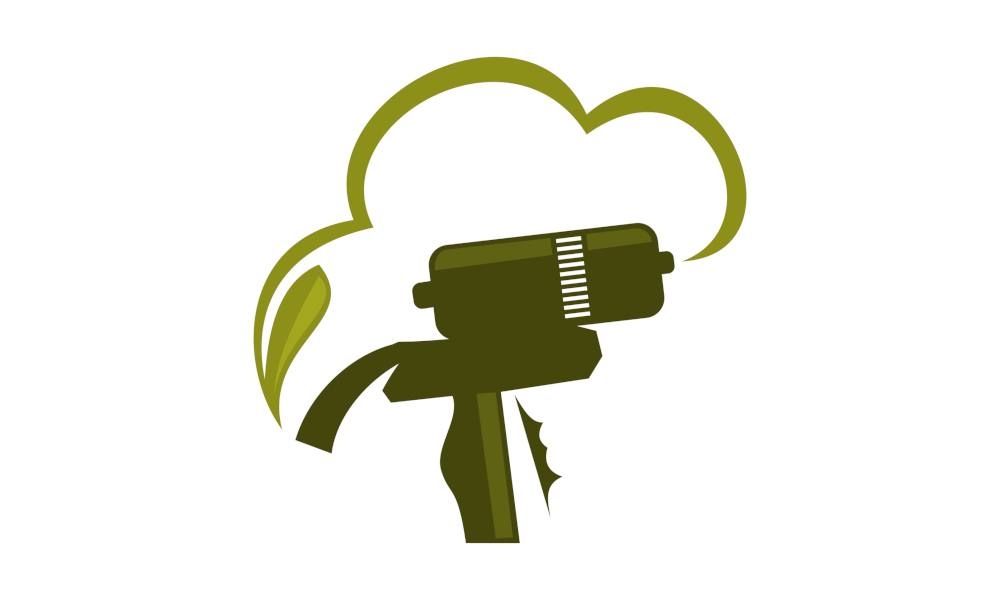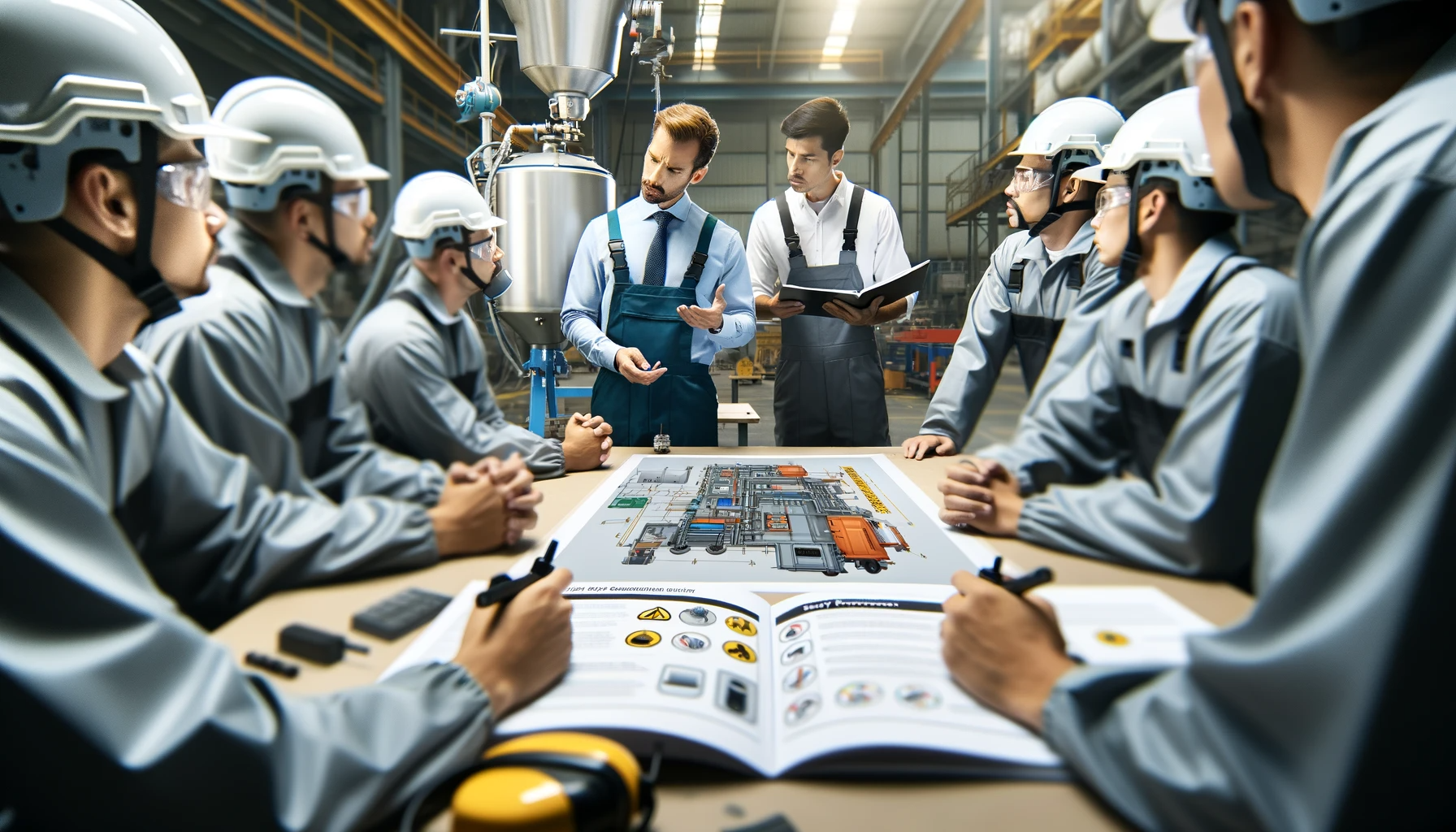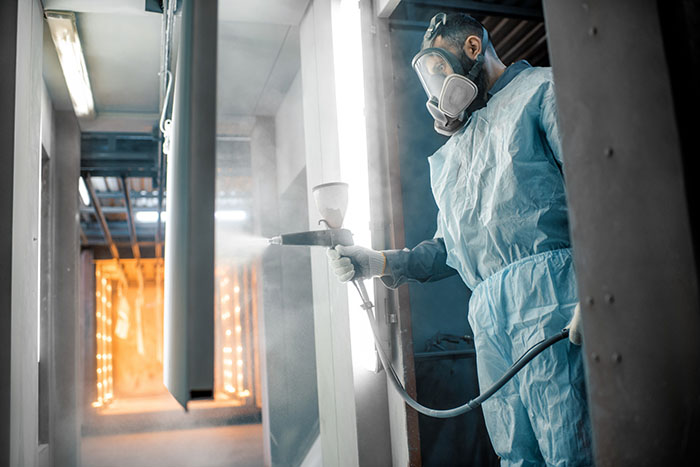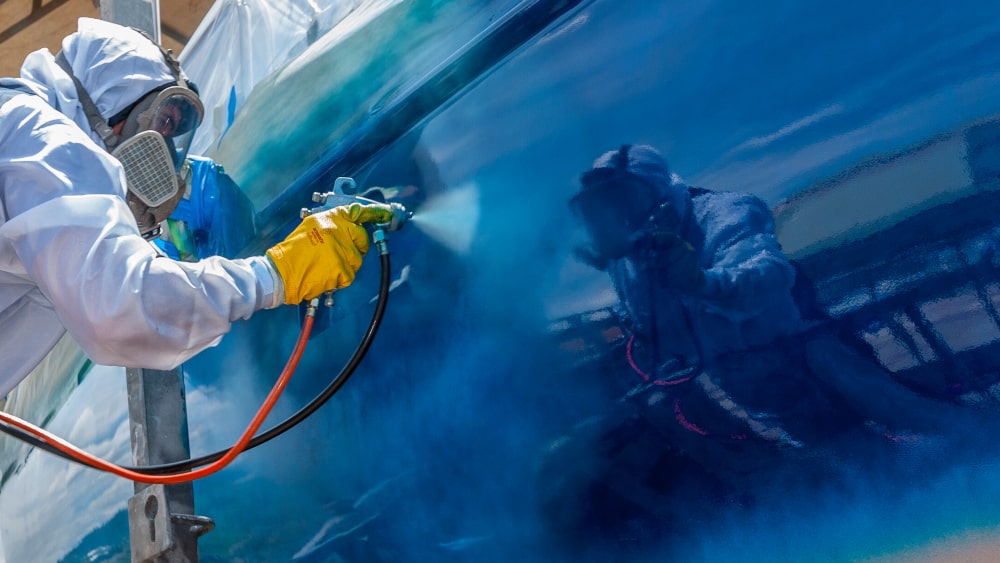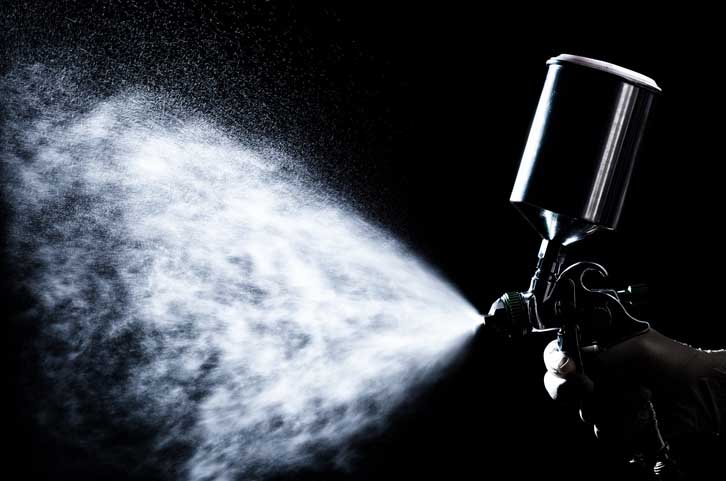- Understanding Spray Gun Components
- How to Clean a Paint Spray Gun
- Spray Gun Maintenance: Tips and Techniques for Success
- FAQs and Common Spray Gun Issues
All spray guns undergo constant wear and tear throughout their lifespan, and while quality guns are built to last for years, they still require frequent maintenance to retain their original functionality.
Understanding how your equipment works, along with how to clean it, will help you ensure maximum spray gun longevity. By sticking to a routine maintenance schedule, reliable performance, cost-effectiveness, and time savings can be expected from your spray gun for years to come.
Understanding Spray Gun Components
Spray guns consist of many intricate parts that are crucial to their overall operation. While HVLP, LVLP, and airless spray guns rely on different mechanisms for fluid delivery (compressed air vs an electric or pneumatic pump), their components are very much the same. These components include:
- Air Cap: The air cap is the outermost portion of the spray gun assembly, and is responsible for atomizing the fluid and directing it to the medium.
- Nozzle: The fluid nozzle's primary purpose is to control and meter the fluids as they travel to the air cap and become ready for application.
- Needle: Controlled by the trigger of the spray gun, the needle serves as a "start-stop" mechanism for the fluid.
- Fluid Passages: Fluid passages are a general term for all the internal components, tubes, and hoses that transport fluid through the professional foam gun or paint gun.
How to Clean a Paint Spray Gun
While manufacturer specifications for spray gun care can differ based on the type of machine used ( electric paint sprayer vs. hydraulic, etc.), the same general principles apply. Always consult the user manual for detailed instructions on how to clean airless paint sprayers and compressed air sprayers.
Preparation
Begin by disconnecting the power source to avoid rogue sprays. Pressure will then need to be released: place the spray gun against a grounded metal pail and pull the spray gun's trigger to flush any remaining liquid that may be within the hose or spray gun.
If equipped, adjust the prime valve to the drain position. Before beginning the cleaning job, gather these tools and supplies:
- PPE
- Brushes
- Flush Buckets
- Cleaning Solutions (lacquer thinners, manufacturer products, etc.)
The Pump and Spray Gun Cleaning Process
Flushing is undoubtedly the best way to clean paint sprayers. The specific step-by-step process to clean Graco paint sprayers is found below:
- Perform the pressure-relief procedure, as detailed above. Set the prime valve to the drain position.
- Remove the air cap from the spray gun.
- Remove the fluid intake tube from the paint container, wipe it clean, and place it into a bucket of spray gun cleaner solution. Place the drain tube into a waste bucket.
- Turn the machine's dial from "drain" to "spray". Point the spray gun into the paint bucket, compress the trigger, and spray excess paint out of the system until flushing fluid begins to appear. Turn the system off.
- Point the gun into the flushing bucket. Turn the system on and spray until the flushing fluid begins to run clear.
- Turn the system off, and change the dial valve to "prime". Turn the system back on, and allow the fluid to work its way out of the system until the drain tube runs clear.
- Turn the valve back to "spray", and perform one final flush of the spray gun.
Disassembly
It's only necessary to completely disassemble spray guns for more extensive cleaning.
Most spray guards, air caps, and fluid nozzles can be unscrewed subsequently: once the air cap and fluid nozzles have been disassembled, a specialized tool will be needed to release the needle from its position.
To clean all of these pieces, utilize a soft bristle brush to remove large chunks of paint. Components can also be soaked in a cleaning solution for paint residue removal.
Drying, Reassembly, and Spray Gun Storage
After thoroughly cleaning each piece, dry the metal spray gun components to prevent rust. After drying components, the spray gun can be put back together and stored away in a cool, dry location.
If a contractor needs to store spray guns for a longer period, it's important to use a pump-protecting solution and to cover open ends such as hoses and nozzles.
Spray Gun Maintenance: Tips and Techniques for Success
Spray technicians should regularly inspect their components for wear and determine if any parts replacements are needed.
Odd noises, visual damage, and poor performance should be addressed immediately. Lubrication, particularly on seals, cups, and rods, is also helpful for preserving the paint pump's longevity.
FAQs and Common Spray Gun Issues
Routine service can help prevent many of the common issues that electric and gas powered sprayers face. Below are some of the most common questions and troubleshooting problems that individuals encounter.
Why is My Paint Sprayer Motor Not Turning On?
The most common reasons why a sprayer motor won't turn on include electrical feed issues and a closed pressure relief valve.
What to Do if the Paint Sprayer Keeps Clogging?
If a paint sprayer keeps clogging, it's likely that it hasn't been properly flushed. Avoiding high-viscosity, incompatible liquid materials will also help with clog prevention.
What to Use to Clean My Paint Gun?
Many contractors find themselves wondering what to clean spray guns with. For best results, cleaning airless paint sprayers should be done with an approved flushing solution from the manufacturer.
How to Check if a Gun is Clean?
A spray gun is clean when the flushing solution begins to come out clear.
How to Prime Paint Sprayers?
To prime a paint sprayer, place the intake and return lines into a new can of paint, turn on the intake and return valves, turn the machine on, and slowly open the release valve to prime the system.
What is Airless Paint Sprayer Equipment?
Airless sprayers are industrial machines that rely on electric or pneumatic pumps to transport and apply liquid materials to a spray medium.
At the end of the day, it's critical that paint sprayer maintenance is followed for dependable equipment performance. Keeping internal components clean, lubricated, and corrosion-free will ensure that they are ready to use as soon as your team needs them.
Here at Bolair Fluid Handling Systems, we provide a fantastic selection of high-end paint sprayers from industry-leading manufacturers, such as Graco. Learn about all of our solutions today and contact us for a quote to get started.

